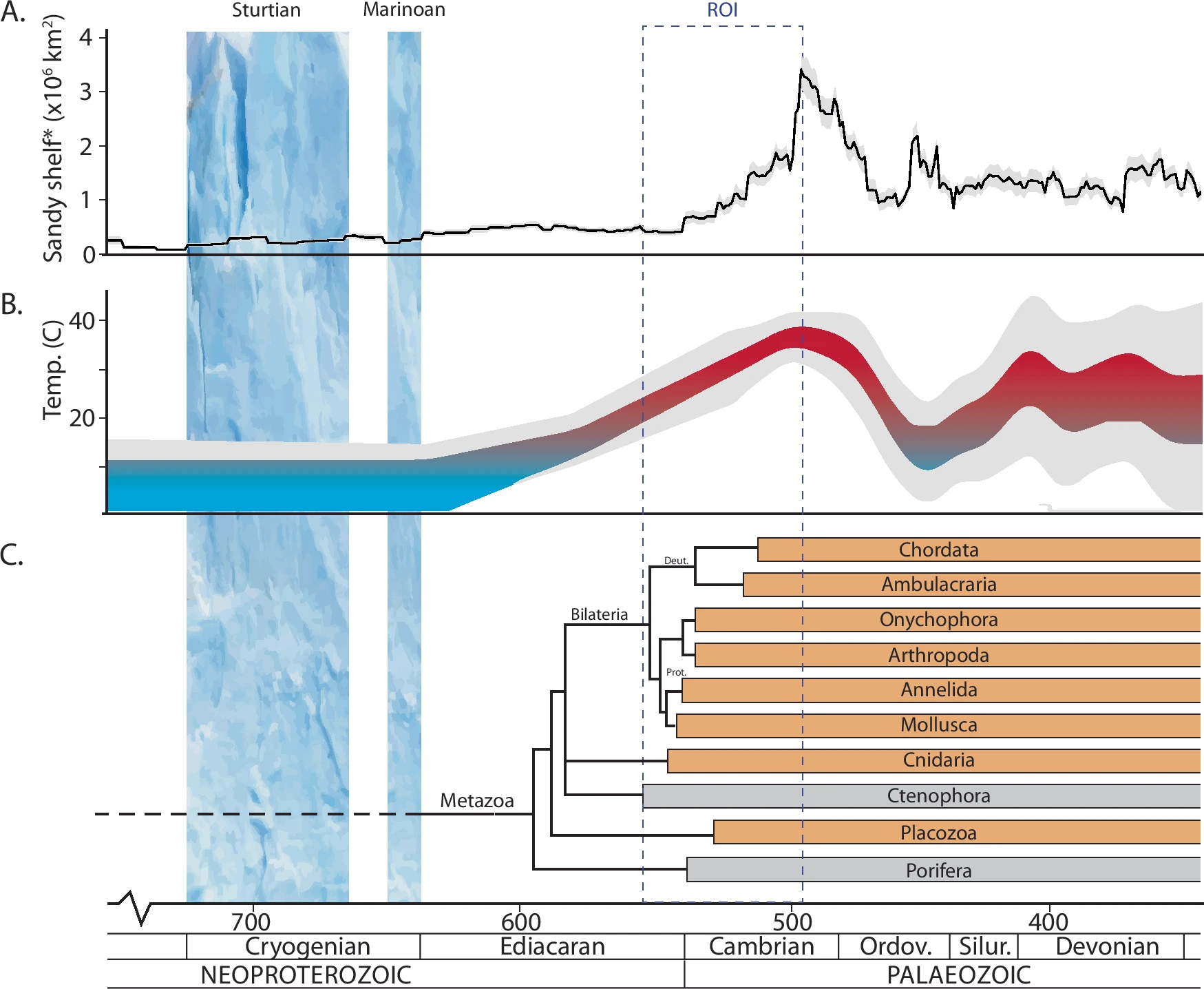Night and Day - Driver of Diversity!
I have come across a couple of articles which are promoting the idea that daily changes in the oxygen content of shallow shelf seas in the Cambrian were a major driver of the diversification of animal life in the "Cambrian Explosion". You can read about it HERE and HERE. The inspiration for both articles is THIS PAPER in Nature.
The main point of the paper is that in shallow shelf seas the amount of oxygen in the water would change, depending on the amount of sunlight. During the day, photosynthesis would increase the amount of oxygen in the water. But at night the decay of organic matter on the sea bed would reduce the amount of dissolved oxygen. This rejoices in the term ""benthic diel oxygen variability". Diel was a new word for me and means "involving a 24 hour period". Whether days were 24 hours long in the Cambrian is a rabbit hole we will not go down!
An animal in such a shelf sea would have to cope with wildly varying oxygen content in the water in which it lived. Those that survived would do so by becoming more diverse - or so the authors believe.
At this boundary, the temporal extent of potentially global glaciations of the Cryogenian (blue vertical fields) is depicted as well as this study’s region of interest (ROI).
A The sandy shelf area in Laurentia and its increase in extent over the Neoproterozoic-Palaeozoic, from ref. 14 (black line, grey field represent bootstrap resampled error at ±1 std. dev.).
B One modelled global average surface air temperature representation (at low latitude) modified from ref. 34, see also supplementary information and Supplementary Fig. 1 for comparison with clumped isotope data from ref. 27. Grey field represent ±1 std. dev and +25 °C marking a transition from cold (blue) and warm (red) climate states. A gradual shift from an icehouse to a greenhouse climate (blue-red colour).
C The divergence of animal clades (one of several possible time-calibrated trees, based on ref. 96, with approximate divergence between lineages based on ref. 97 and ref. 71). Boxes represent early branching clades and Bilateria that today perform cellular oxygen sensing mechanisms with the Hypoxia-Inducible Factor (HIF) system (filled orange) or not (grey), based on refs. 43,53. The positions of Ctenophora and Placozoa are based on ref. 96.

No comments:
Post a Comment